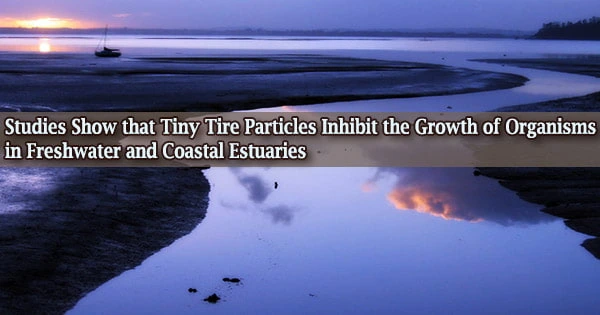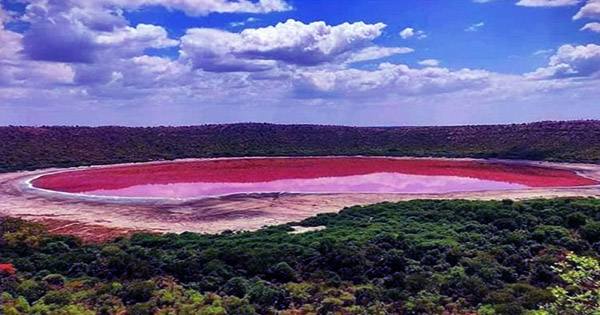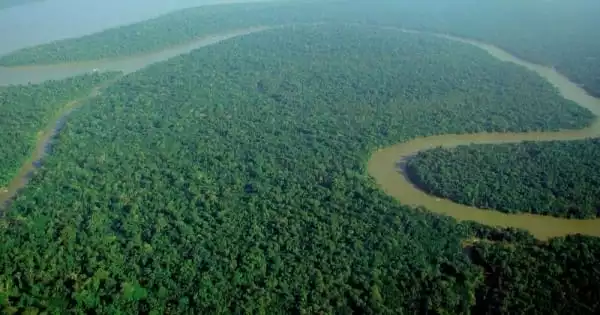Carbon dioxide, sulfur dioxide, and water vapor are the primary gases emitted by volcanoes. One of the finest approaches to learn more about volcanic systems and the active magmatic processes is to analyze these gases.
Even the possibility of an approaching eruption can be determined by comparing carbon dioxide levels to those of sulfur dioxide. The essential analytical systems are transported to the action site using drones. The drones’ size has, however, made transportation to the locations where they are used expensive to date.
The potential for employing a tiny, transportable observation drone in distant areas has recently been investigated by a team at Johannes Gutenberg University Mainz (JGU) led by Professor Thorsten Hoffmann. Even difficult-to-access areas can be reached with this incredibly small drone system by foot. Additionally, it just needs a few administrative and flight preparations to function as an aerial observation platform.
Eruptions can be predicted on the basis of volcanic out-gassing
The principal gases released by volcanoes are carbon dioxide, sulfur dioxide, and water vapor. One of the few chemical indications that can be used to detect events taking place in deep underground magmatic systems, which are otherwise inaccessible, is released gas emissions.
For some time now, scientists have believed that studying these volatile emissions could significantly improve the ability to anticipate volcanic eruptions. The ratio of carbon dioxide to sulfur dioxide concentration in the gases emitted during a volcanic eruption is a particularly interesting measure when it comes to monitoring changes to volcanic activity.
We need to obtain real-time data on sulfur dioxide levels as this lets us know when we are actually in contact with the volcanic plume, something that readily moves over time in response to atmospheric factors. The localization of a plume by visual means alone from a distance of several kilometers is practically impossible.
Professor Thorsten Hoffmann
In fact, changes to this ratio have been seen right before the eruptions of a number of volcanoes, including Etna. Unfortunately, it is very difficult to really put together a continuous time series of gas compositions.
Direct hand sampling requires scaling the volcano, which is difficult and time-consuming. There is also a risk of an unexpected explosion. However, due to shifting wind directions, stationary monitoring equipment frequently fails to capture accurate data on gas compositions.
Measurement these issues can be solved by drones, which have already been employed to assess the chemical properties of volcanic gases. Particularly, the longer distances involved greatly lessen the threat posed to volcanologists by abrupt shifts in volcanic activity.
Drones also allow access to emission sources that would otherwise be challenging or impossible to reach, like fumaroles in treacherous terrain or older portions of the plume that are often found in downwind regions and at higher altitudes.
Due to the remoteness of the locations where the majority of volcanoes are to be located, only larger drones have so far been used for the monitoring of volcanoes, which has obviously proven problematic.
“It is for this reason that small, easily transportable drones are an essential prerequisite if we want to get to isolated or difficult-to-access volcanic sites and suitably track the activity there,” said Niklas Karbach, lead author of the corresponding paper that has recently been published in Scientific Reports.
Small drone system that can be carried in a backpack
In collaboration with volcanologist Dr. Nicole Bobrowski of Heidelberg University and the National Institute of Geophysics and Volcanology (INGV) in Catania, the Mainz-based research team has been trialing a tiny commercial drone weighing less than 900 grams equipped with miniaturized, lightweight sensors. A backpack might be used to carry this combo, which weighs no more than a bottle of mineral water, to the site. But it’s not just the drone’s weight that matters.
“We need to obtain real-time data on sulfur dioxide levels as this lets us know when we are actually in contact with the volcanic plume, something that readily moves over time in response to atmospheric factors. The localization of a plume by visual means alone from a distance of several kilometers is practically impossible,” added Professor Hoffmann, head of the JGU group.
TeMaS Terrestrial Magmatic Systems, one of JGU’s eight High-potential Research Areas, is providing financial assistance for the research. By merging the knowledge from fields as disparate as experimental petrology and atmospheric chemistry, TeMaS, a collaboration of researchers from Mainz, Frankfurt, Heidelberg, and Munich, seeks to comprehend the relationships between the magmatic processes in the Earth’s mantle and the atmosphere.
















